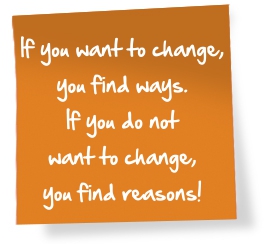
“If you do not change direction, you may end up where you are heading” (Lao Tze). In times of globalization, dynaxity (dynamics and complexity), speed of change, mobility/flexibility, demographic change and changing values are organizations, teams and individuals challenged to perceive change as necessary and natural to initiate and cope with in the daily work process. Change requires ambition, inspiration, irritation and “shaking” of the people on the one hand, but also training and support in dealing with necessary changes on the other side. Too many changes at the same time lead your organization into the panic zone, including operational stress or paralysis. Too few changes lead your organization, including employees and executives in the Comfort Zone. Both is inhibiting competitive advantages. What is the right level of ambition and change for your organization, what is your grow-zone for a successful innovation and development?
The levels of organization, team and individual with the dimensions of “wanting” and “ability” play a central role in successful change and strategic orientations. The consistent and mandatory implementation of these topics is your commitment, respective of your managers and employees. Our support aims to ensure clarity for all parties for the relevant topics and support the process of clarification as well as planning, implementation and evaluation.
Mergers, virtual and matrix teams, restructuring, profit-assurance initiatives, internationalisation, … the only stable is change. How can managers and employees meet these requirements preventively? How can we design change processes more effectively and make them more reasonable for all involved? What do we need to do to make people not only concerned, but involved as entrepreneurs and co-designer? The simple questions: Why (WHY?) do we need this change? What is changing (WHAT?) – and what is the exact process of change (HOW?) are often not communicated in a credible, convincing and consistent manner by the initiators of scheduled changes. The eight success factors in change processes may be known by many. However, only a few are capable to translate into action in a consistent way what these eight success factors mean in the respective organization for all involved (or only a few that appeal to them with respect and clarity).
As facilitators, we support you with a clear structure and a variety of methods to achieve maximum goals, outcomes and liabilities. Driving a clear agenda, regular communication about implications, reached goals and open to-do´s, constantly working with and reviewing of action plans and clarifying of roles and responsibilities help the organization to address and cope with difficult and “hot” topics of change (often conflicts of interests). We pay attention to the overall process of change and resulting systemic effects. Thereby we focus not only on the next operational step. Based on a targeted communication, we make usage of and develop the various individual and team potential for the benefit of a successful implementation.
Substantive suggestions, inspiring methods and vivid workshop designs lead to greatest possible attention, curiosity, concentration, interest and desire to implement change results and advance on the job.

We assist you in finding ways and in clarifying and addressing reasons (and the underlying motives).
Benefits (among others):
Faster and value-adding implementation of change processes, increased creativity by utilizing the so far unused or not tapped employee potential, increased productivity through reduced friction losses and decreased number of double done work; increased relevant communication and in-formation flow; reduced meeting times, increased number of completed projects in target (time / budget / quality)
Target group:
(Top) Management, Project Manager, organizational and functional units/project groups/teams with a pending or current change processes (e.g. corporate culture development, new operational and organizational structure, internationalisation/ installation of global hubs, etc.)
Topics/goals:
- Change architecture: What does it take for an effective and sustainable change?
- Fundamentals of change: accompany and supervise professional and personal development processes
- Addressing the force field analysis, SWOT analysis and culture diagnoses in the overall system
- Check-change causes and forces
- Systemic view of the aspects: Organization, team and individual, including the dimensions of “wanting” and “ability”
- Shaping and customizing the 8 success factors in change processes specific to company´s needs
- Define target picture and roadmap
- Overall communication concept
- Training of leaders and change agents
- Observation of the 8 factors for total stagnacy
- Definition and up-skilling of change expertise of senior staff (including management) in the initiation, accompaniment and implementation of change (Do’s and Dont’s)
- Large group events (eg Open Space, Future Shop, World Cafe…)
- Small group workshops (including collegial case consultation, supervision, action learning, …)
- Dealing with emotional and social aspects in change processes
- Initiate reflection of the 7 stages of change curve and purposeful leadership
- Coping and overcoming of resistances and uncertainties
- Diagnose central change types and make usage of them for progressing the change process


